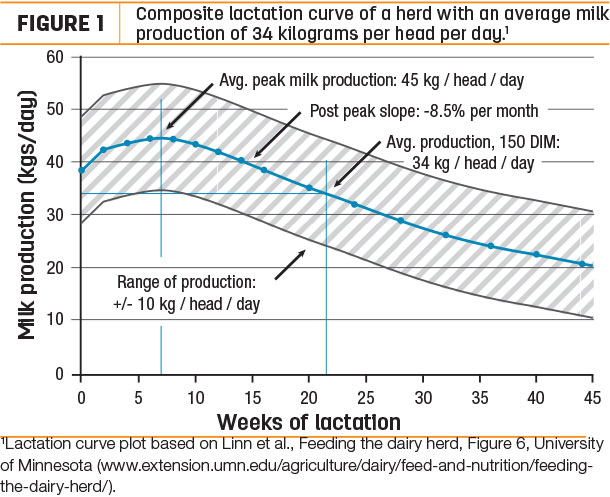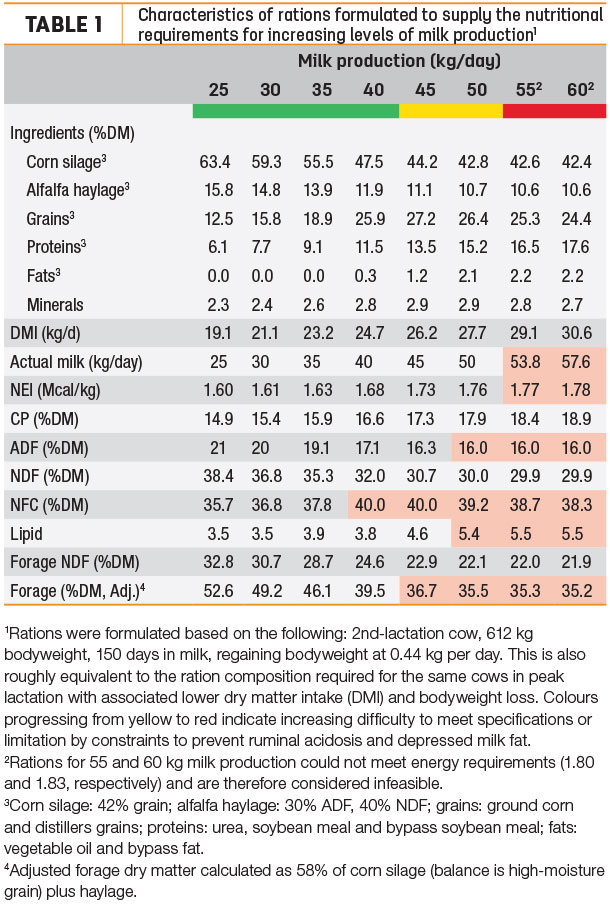More recently, suppliers of these machines, feed suppliers and, surprisingly, even some academics have promoted that these grain feeders should be used more extensively to better meet the individual requirements of the cows.
Like many nutritionists, I thought the wisdom of separating concentrate from forage feeding had been settled with the widespread adoption of TMR technology and the general disappearance of parlour or freestall computerized grain feeding a number of years ago. What, if anything, has changed?
A brief retrospective of dairy concentrate feeding
For all intents and purposes, dairy production began with individual animal feeding and milking, culminating in relatively recent times in the so-called tiestall or stanchion barn.
As breeding improved the milk production potential of dairy cattle, more and more grains and other concentrates needed to be fed to meet their nutritional requirements.
Eventually, grain levels increased to the point that they created digestive upset in higher-producing animals when the grain was fed predominantly during milking. It was then recognized that maintaining forage intake in association with grain intake was beneficial to both rumen function and milk production.
This led to the development of various forms of computerized grain feeding for tiestall barns, as well as freestall and parlour systems that were becoming popular. As milk production and grain intake continued to increase, further problems with digestive upset and laminitis developed.
These appeared to be associated with animals voluntarily eating inadequate amounts of forage to support the levels of grain they were consuming from the grain feeders. In addition, producers were finding it increasingly difficult to program appropriate computer settings for each animal over the span of their individual lactation.
The majority of these problems were ultimately overcome by the adoption of TMR feeding, which resulted in consistent improvements in production of at least 10 to 15 percent as well as decreases in health problems and depressed milkfat, even in well-managed herds.
Why would we return to what we left behind, just because we are now using robotic milking machines?
Nutrition of high-producing dairy cows
The biggest issue with the feeding of concentrates to cows individually is the challenge to achieve peak milk production without experiencing a significant incidence of digestive upset and feet and leg problems over time.
A typical composite lactation curve for a herd producing an average of 34 kilograms of milk per head per day at 150 days in milk is given in Figure 1.

To achieve this relatively modest level of production, average peak production needs to average about 45 kilograms per head per day.
This means the majority of the cows will need to be fed a ration that exceeds the requirements for 45 kilograms milk production if they are to meet their nutritional requirements without excessive bodyweight loss and be able to become pregnant again in a reasonable amount of time.
Example characteristics of a set of lactating rations formulated to support milk production from 25 to 60 kilograms per head per day is given in Table 1.

The coloured sections indicate where formulations become constrained and, ultimately, infeasible by specifications required to support rumen function and prevent health problems related to acidosis.
As milk production increases to about 40 kilograms per head per day, it is possible to meet increasing energy density requirements from sources of starch and digestible fibre. After that, minimum forage fibre specifications, required to support chewing and normal rumen function, force further increases in energy density to come primarily from dietary fat.
The amounts of fat that can be fed are also limited to prevent problems with either rumen digestion or milkfat depression from occurring. This results in little fundamental change in ration composition beyond 45 to 50 kilograms of milk production, after which ration composition basically stays constant, and higher levels of milk production are achieved primarily by higher levels of intake alone, provided the ration remains “rumen safe.”
It is for this reason that “one-group” TMR rations became the norm for herds producing more than 30 to 35 kilograms of milk per head per day on average, as well as the fact that the return from ensuring as many animals as possible achieved maximal peak production was much greater than the savings provided by minimizing the amount of grain fed to lower-producing, later-lactation cows.
Furthermore, in most cases, the higher levels of milk production achieved on maximal energy rations necessitated the feeding of the same ration over the whole lactation to ensure adequate recovery of body condition before dry-off to support the next lactation.
Only in cases where there is delayed conception, or the use of rBST and lactation length becomes unusually long, is it foreseeable to experience excessive numbers of over-conditioned cows.
In these cases, feeding a second, lower-energy TMR at some point in the lactation to selected animals can be beneficial to prevent accumulation of excessive body condition.
However, in these cases, it is important to ensure the energy level of the diet is not decreased excessively (e.g., perhaps 5 percent), or milk production may drop as well.
Challenges of individual cow feeding
For the most part, our understanding of dairy nutrition has been based on research using individual animal feeding. As a result, we have formulation systems that relatively accurately predict individual animal nutrient requirements by summing the amounts of each nutrient required based on bodyweight, milk production and pregnancy.
Then, knowing how much dry matter an animal will consume, one can determine the nutrient concentrations and proportions of selected ingredients required to formulate a ration to meet the animal’s requirements. This, however, is where the challenge begins.
-
Prediction of dry matter intake is poor: Current dairy models generally account for less than 70 percent of the variation in dry matter intake that exists between animals.
This means model intake estimates are wrong for the majority of animals and will thus either over- or under-predict grain requirements for individual animals by up to 15 percent.
When grain is fed separate from the mixed ration and the calculated ration is “maximized” to meet peak milk production requirements, animals with lower-than-average dry matter intake who consume their grain allocation will then under-consume the base mix or forage component.
This results in them experiencing a higher concentrate-to-forage ratio than intended and predisposes them to digestive upset.
-
All feeding systems are based on groups: Though we can formulate rations for individual animals, we house and feed them in groups.
This includes variation in bodyweight, intake potential, parity, stage of lactation and level of production; feeding concentrate by level of production in the feeder of a “robotic milker” is no exception.
And though we can program computers to deliver grains and supplements to individual animals, it remains so far unpractical, and perhaps impossible, for the feeding computers to reliably do ration formulation for each animal to adequately account for this variation and thereby prevent either failure to peak or digestive upset in high-producing cows when sufficient grain is fed separately from the balance of the ration.
-
Individual grain feeding is for low-producing, not high-producing cows: You rarely hear anyone say that they are concerned about the amount of “expensive grain or supplement” being fed to high-producing cows in a TMR.
The perception is: The lower-producing cows could produce the same amount of milk by eating fewer concentrates. The reality is: They would also have to eat proportionately more forage dry matter, which may in many years cost more per unit of energy than the concentrates.
Regardless, the concept of restricting concentrate consumption by the low-production cows in the TMR, or partial mixed ration (PMR), to save costs through individual grain feeding, means that the fresh cows and early lactation cows must be put at risk by having increasing amounts of their concentrates supplied separate from the main ration, the opposite practice that has long been recommended to minimize digestive upset and prevention of milk fat depression.
Feeding in robotic milking equipment
It is clear that providing a small amount of concentrate, perhaps up to 1 kilogram per milking, is useful and sometimes necessary to entice cows into a robotic milking machine to be milked.
But it is clear that higher levels have created similar problems to those experienced with computerized grain feeders in the past. Some producers have reported increases in milk production with individual cow grain feeding versus full TMR feeding, but this usually occurs when inadequate levels of grain have been fed in the TMR to optimize peak milk production.
One area where selective individual cow feeding may have value, however, is for supplying amino acids or other targeted supplements to transition and higher-producing cows when they are housed in heterogenous groups. Whether this needs to be within a robotic milker remains to be seen.
When producers were shifting from tiestall to parlour milking, and then to freestall computerized grain feeders and TMRs, producers said it was necessary to continue feeding some grain in the parlour to get the cows to enter and keep them contented during milking.
How much grain feeding do we see in milking parlours today? Perhaps a time will come when the cows realize they don’t need it in robotic milking machines either? ![]()

-
Alan S. Vaage
- Ruminant Nutritionist
- Jaylor Fabricating Inc.
- Email Alan S. Vaage









